For the Indigenous Resilience Center (IRes), elevating Indigenous knowledge and leadership is central to its mission. Part of the University of Arizona in Tucson, IRes collaborates closely with 22 tribes across the Southwest to co-develop climate solutions and train the next generation of community leaders. Its projects span food sovereignty, water security, and health equity, working to address environmental challenges and build resilience in local communities. In northern Arizona, IRes supports the work of two Hopi farmers who are leaders in food sovereignty, Dr. Michael Kotutwa Johnson, a faculty member at IRes, and Lilian Hill, co-founder of Hopi Tutskwa Permaculture Institute. Their work reveals what Hopi lifeways and farming practices can teach the world about building healthy, sustainable food systems.
“Hopi is one of the very few places where we plant corn to fit the environment – we do not manipulate the environment to fit the corn,” Kotutwa Johnson explains. In the high desert of Arizona, the Hopi have stewarded the land continuously for generations. Despite the dry climate, Hopi farmers excel at cultivating crops with just a fraction of the water typically used in commercial agriculture. Kotutwa Johnson’s research focuses on Indigenous conservation and land management techniques, including the cultivation of Indigenous seeds.
Kotutwa Johnson also tends his own crops at Hopi, including corn grown from ancient seeds. He was recently given 800-year-old Hopi corn kernels discovered at an archaeological site and decided to see if they would grow. Under his care, these seeds have grown into lush, chest-high plants. Hopi seeds are special – not only do they thrive in a desert climate, they also contain significantly higher nutritional value than mass-produced corn. “Seeds are very important,” Kotutwa Johnson says. “They're the life-giving force. And each one of these little kernels on here represents a new generation, a new child.” Studying and preserving this biodiversity is critical, he argues, both to create resilient food systems in the age of climate change and to protect Hopi intellectual property (i.e. indigenous wisdom).
For Lilian Hill, nurturing the next generation of Hopi farmers is also key to building resilience. Hill is the co-founder of Hopi Tutskwa Permaculture Institute (HTPI), a local Indigenous-led nonprofit and a grantee of IRes. Based in Kykotsmovi Village at Hopi, HTPI aims to strengthen local food systems and cultivate community by passing Hopi values, culture, and knowledge on to future generations. The nonprofit’s programs include education and hands-on training in traditional Hopi agriculture and natural building practices.
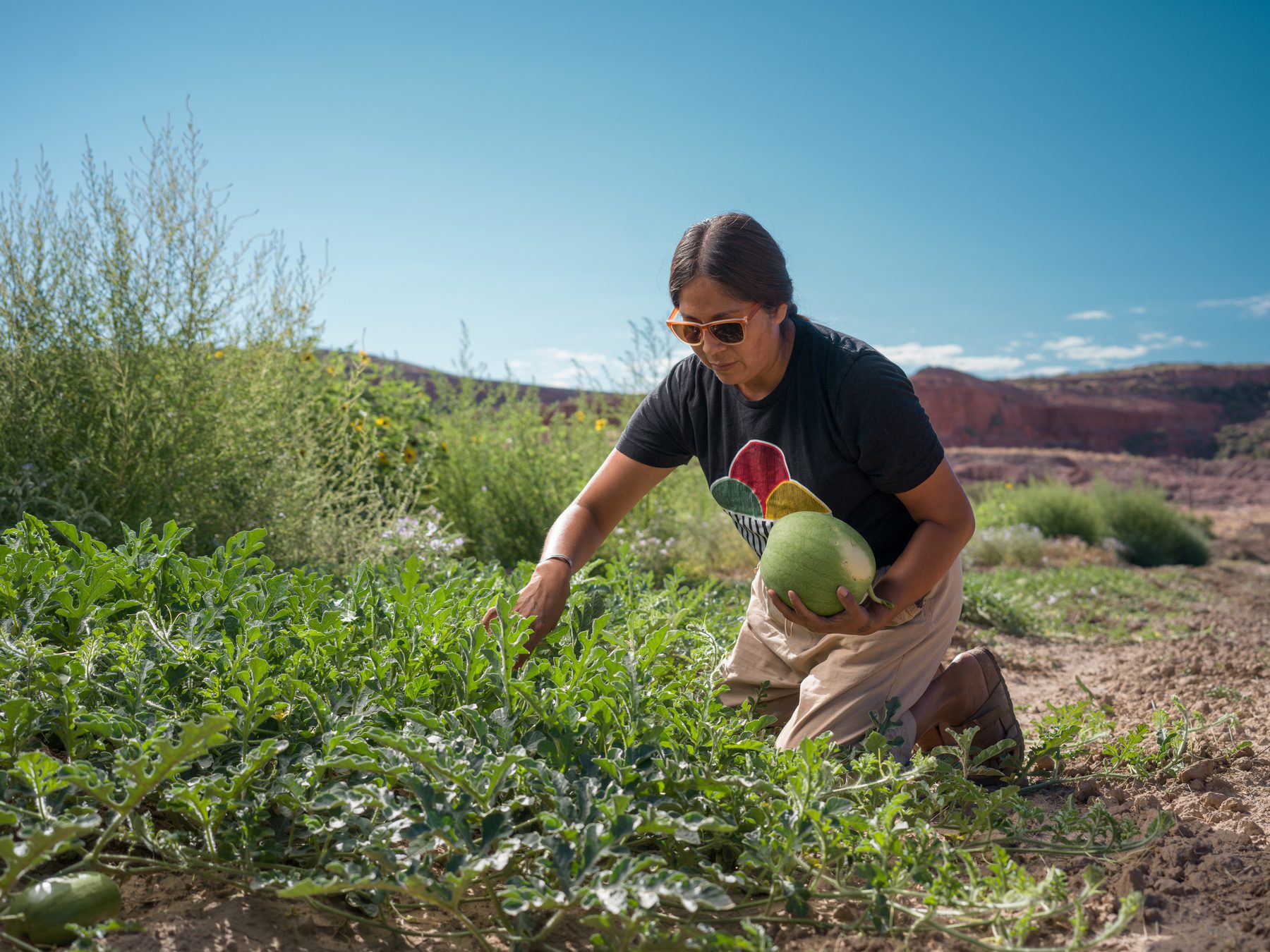
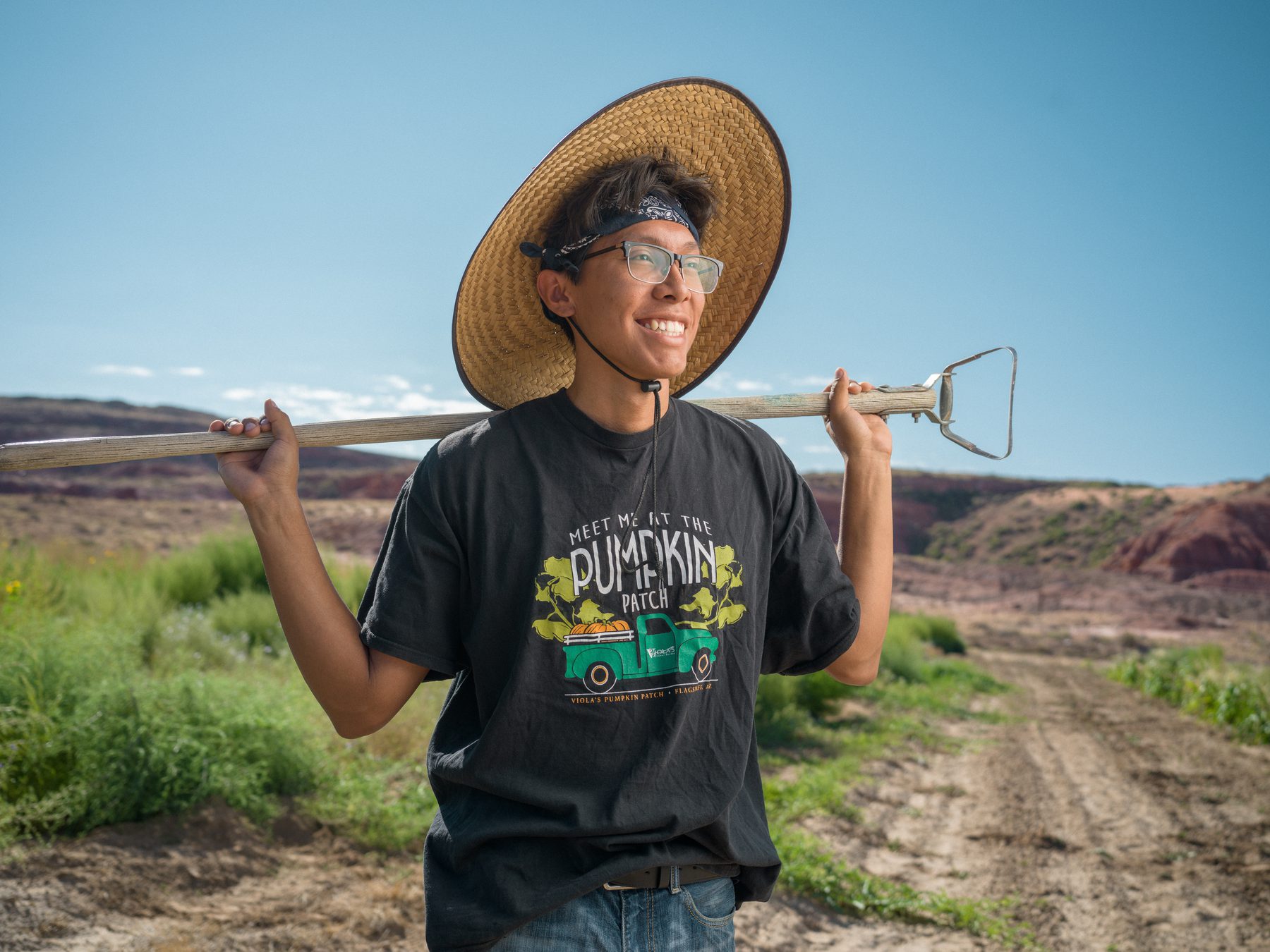
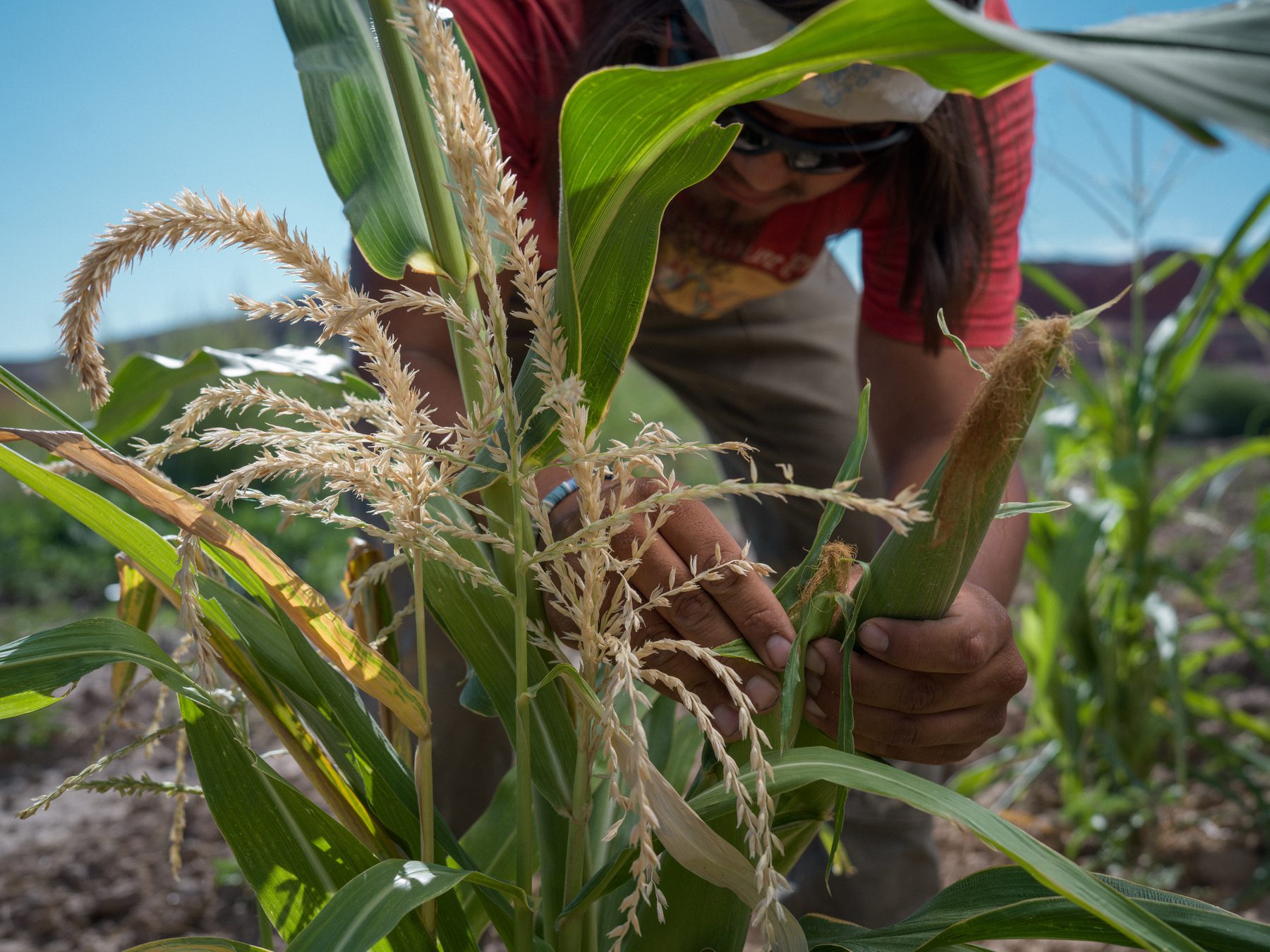

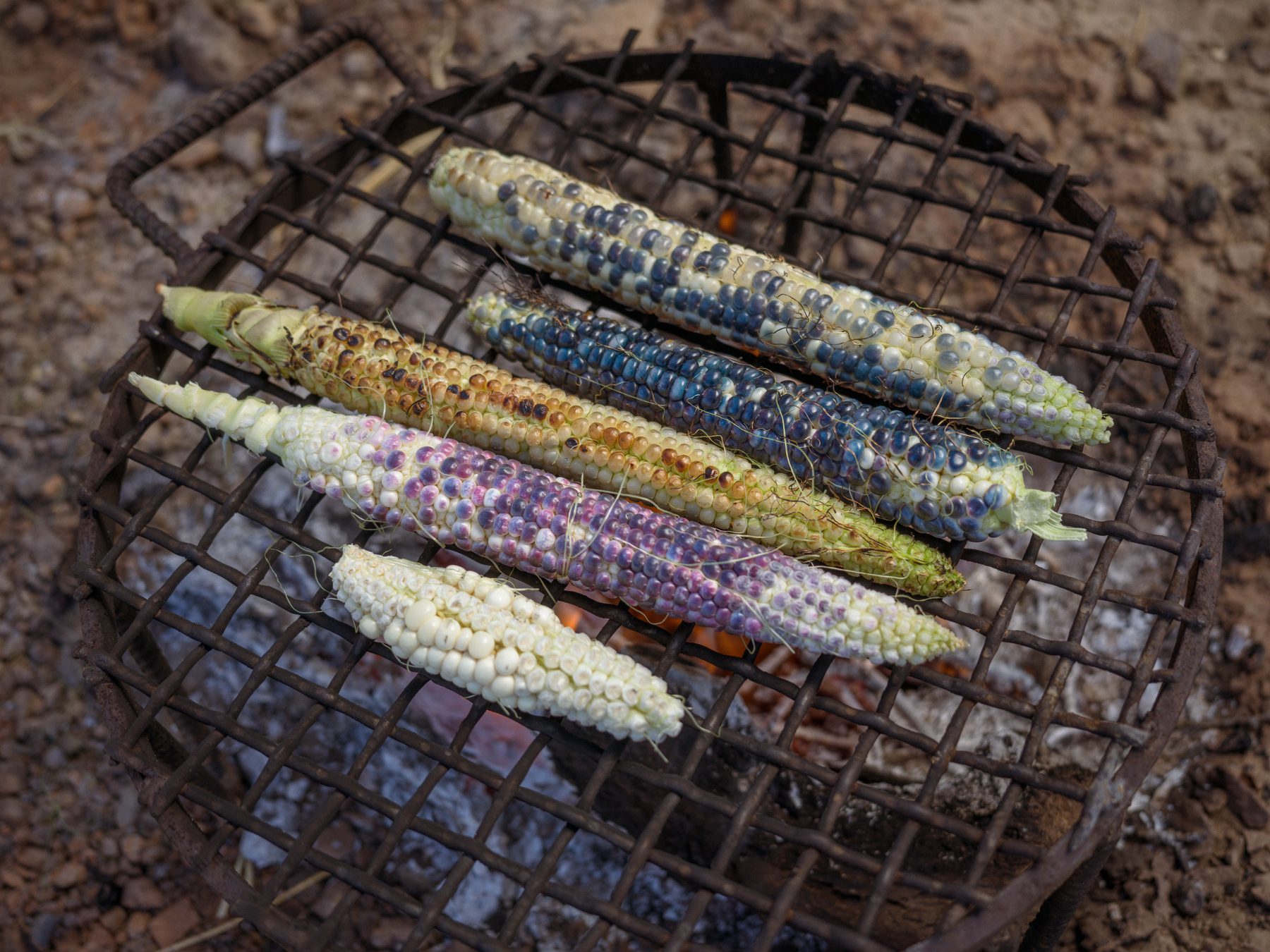

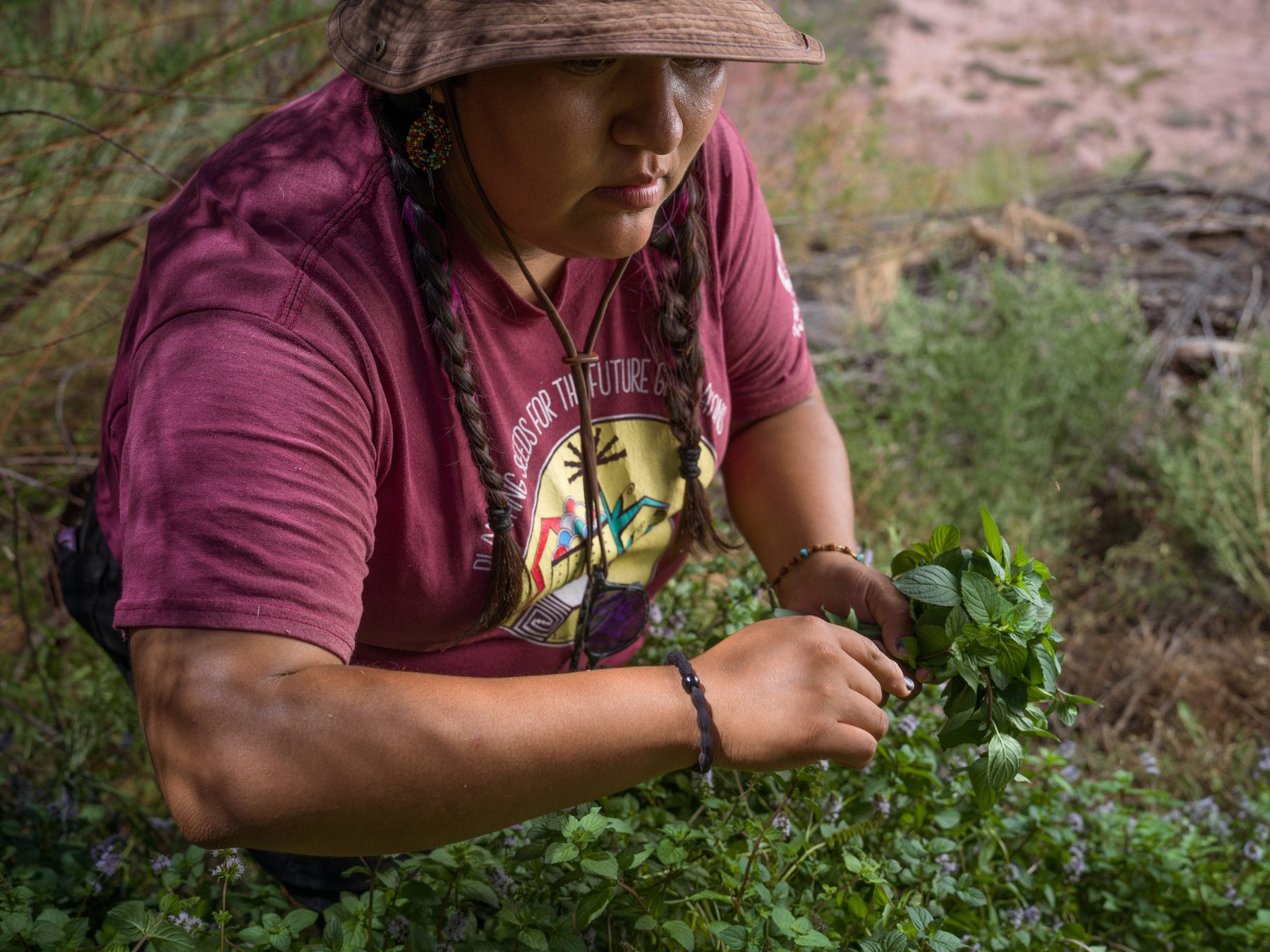
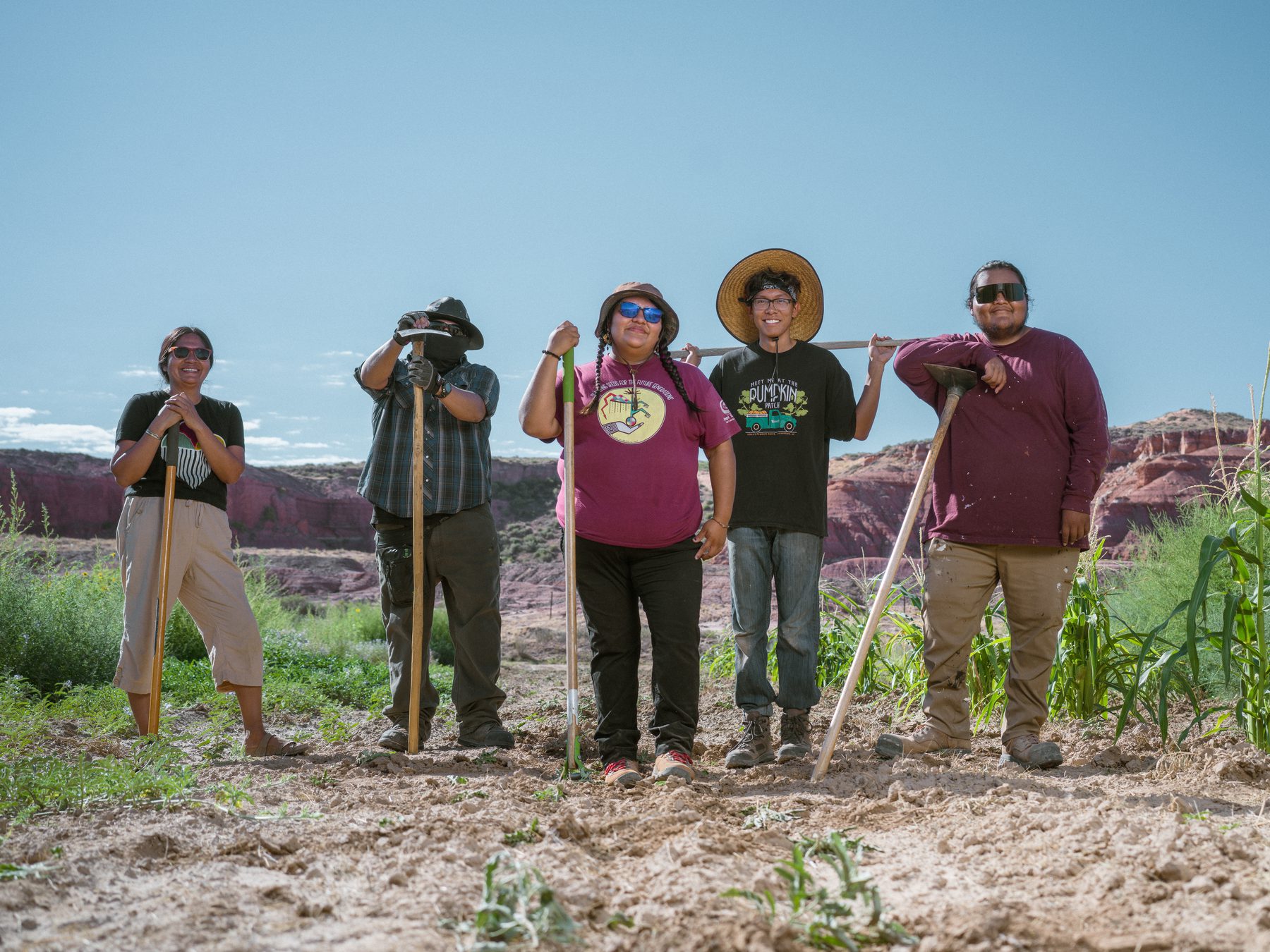
Hill’s home, a sustainably built, solar-powered house surrounded by colorful gardens, doubles as a community gathering place. In her kitchen, baskets are filled to the brim with vibrant peppers, tomatoes, squash, string beans, and sunflowers. “It's really a vision of what it means to be in a thriving state,” she says. “It's a learning space for all to come and to be part of, planting, growing and harvesting.” Now, the nonprofit is expanding with the construction of a Hopi Regional Food Hub to support better access to fresh produce for the Hopi community and welcome Indigenous communities from across the Southwest.
Last summer, Kotutwa Johnson and Hill welcomed a production team led by photographer and filmmaker Tomás Karmelo Amaya to Hopi to share more about their work. This conversation has been adapted from their interviews.
Tomás Karmelo Amaya: Michael, can you tell us how you started farming here?
Michael Kotutwa Johnson: I always like to tell people that I'm a 253rd generation Hopi farmer, you know, and I challenge my colleagues in Iowa and in Kansas on that. It's a lot of fun doing that. I've been doing this around 40 years now. I started out here when I was around the age of ten. I learned how to farm from my grandfather.
Amaya: Can you tell us more about this place?
When I'm walking down on my fields in the morning, you can see the shimmering of the sun as it hits the leaves early in the morning. Everything kind of glows. And you can, if you're silent enough and you take your time, when there's a slight breeze, you can actually hear those corn plants talking to you as they wave back and forth. It's a beautiful thing. When I come home from my academic rigors at the University of Arizona, this is the place that I relax. This is my home.
We're on the Hopi Indian Reservation. This is an area up in northern Arizona, on the Colorado Plateau that's been inhabited for well over 3,000 years. In fact, one of our villages here called Old Oraibi, is known to be the most continuously inhabited village since around 1,100 A.D. The Hopi were never relocated anywhere. We've always been here. They just surrounded us with lines and put another tribe around us. But we've always been here at Hopi and I think that's the important thing.
We've had 200-year droughts out here. So we just adjust our spacing, we plant deeper, we plant later. We're always adapting out here at Hopi. You never give up.
Dr. Michael Kotutwa Johnson
Amaya: Lilian, can you tell us more about your home?
Lilian Hill: This is a home that I built with my husband and our children and members of our Hopi community. A few years ago, in 2015, we started a sustainable home construction program and this was the first house that we built. The home itself is made out of local materials: sandstone, natural clay, sand, straw and water. All of the walls are living earthen walls. The floors are adobe. It was designed to be a climate resilient home to harvest passive solar heat during the wintertime and during the summertime to maintain a cool temperature.
It doesn't really need fossil fuels to function. It's 100% off-grid solar. We also harvest rainwater from the roof, so the home itself acts as a landscape, like a mesa or a mountain, where the water that is shed then is able to replenish the land. We have gardens and orchards planted around the home to grow food. It's really a vision of what it means to be in a thriving state, to thrive and to raise children, to envision the next generation, knowing that their ancestors, their parents and their grandparents thought about them and prayed for them to be here.
Amaya: How is cultivating community at the center of what you do?
Hill: Our staff members, our build crews, our intern farmers, our apprentices – there's just too many to name, individually – but all of them, we all work together and we all view ourselves as a collective or a community of people who are always going to support each other throughout our whole lives. That's what being a community means, to recognize our clan relations, to recognize how we're related to each other and how we're responsible and accountable to each other.
My prayer is to move beyond extraction into a more generative and thriving Indigenous future.
Lilian Hill
Amaya: Michael, how did you come to grow these 800-year-old seeds?
Kotutwa Johnson: Recently I was given some seeds by a friend of mine, who in turn got them from a gentleman who I understand was hiking around Glen Canyon back in the early ‘60s before it became Lake Powell after it was flooded [by the construction of a dam]. There were over 2,000 archeological sites there and he found these seeds on a cob in a jar. They're about 800 years old and I brought them back to Hopi and I started to try to grow them out.
I tried [to plant them] last year, but I planted them too deep so they leafed out underground. This year, I planted them only about an inch deep with some moisture added to the soil and they germinated. I've got three beautiful stands with small little ears of corn. I feel like they've been brought home. I feel like nowadays, some of our seeds are the new boarding school children. They've been taken. They've been misappropriated. When they get home, they’re having trouble adapting. But eventually, you know, with a lot of love and nurturing, they'll learn to adapt again, and they'll learn to thrive again in a community where they've always been from. That’s beautiful.
Amaya: What can Indigenous worldviews, and very specifically Hopi worldviews, teach us about living in balance with the Earth?
Kotutwa Johnson: We've had 200-year droughts out here. So we just adjust our spacing, we plant deeper, we plant later. You know, we're always adapting out here at Hopi. And I think that's one of the most important things is that you never give up. You always have hope, you plant every year, even in a drought year, you plant. You don't plant your whole field, but you plant because that's what you're supposed to do. That's what I was taught to do, and these seeds change as the environment changes because they're just like us.
They say that there's 80% of biodiversity around the globe now that's managed by Indigenous people. We're talking about the processes and techniques Indigenous people use, but if you look at the reason for that 80%, it’s because of their culture, belief system and their values that they have with the environment that maintains that. I think that's the thing that's missing in a lot of our conversations nowadays.
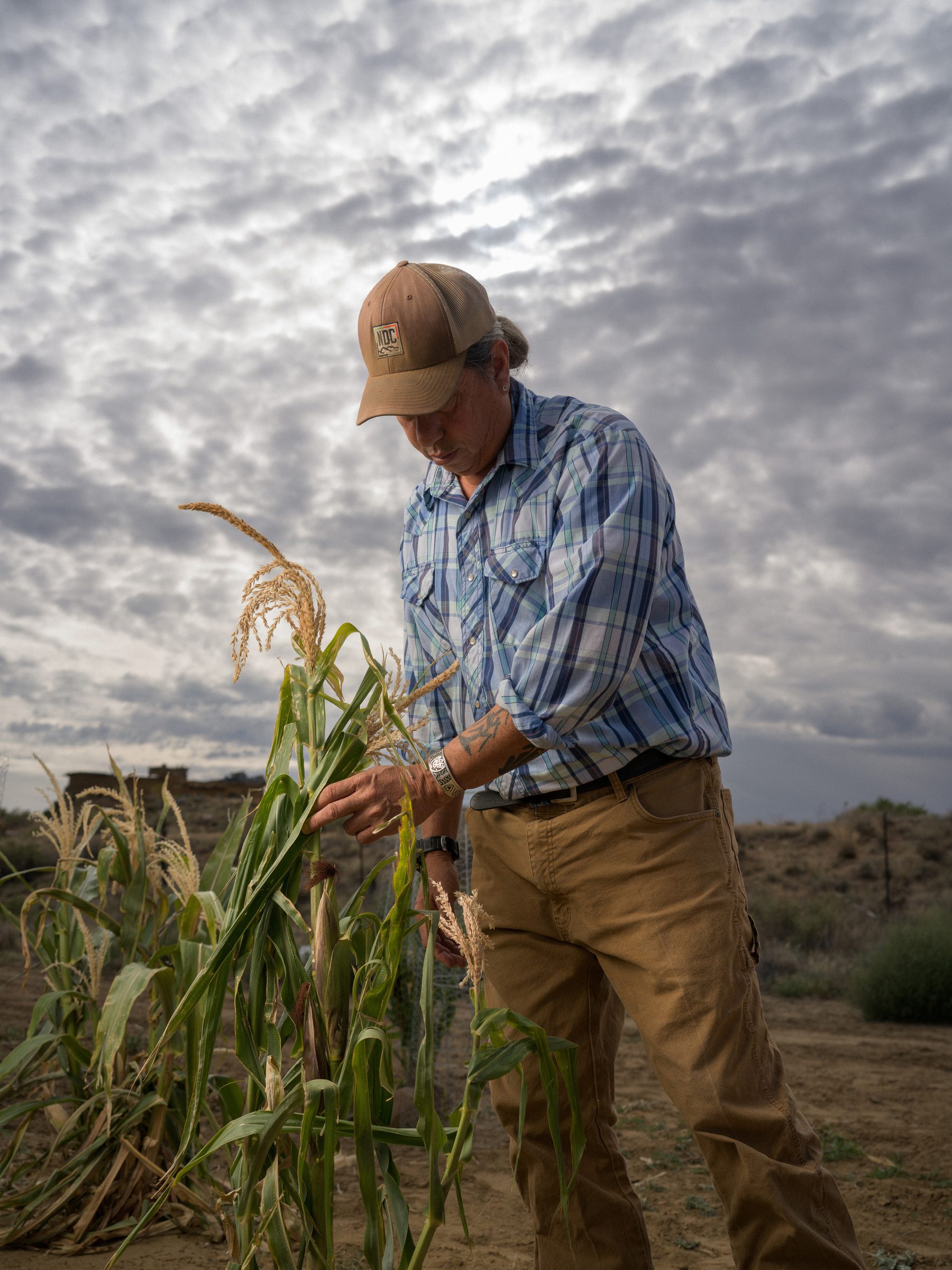
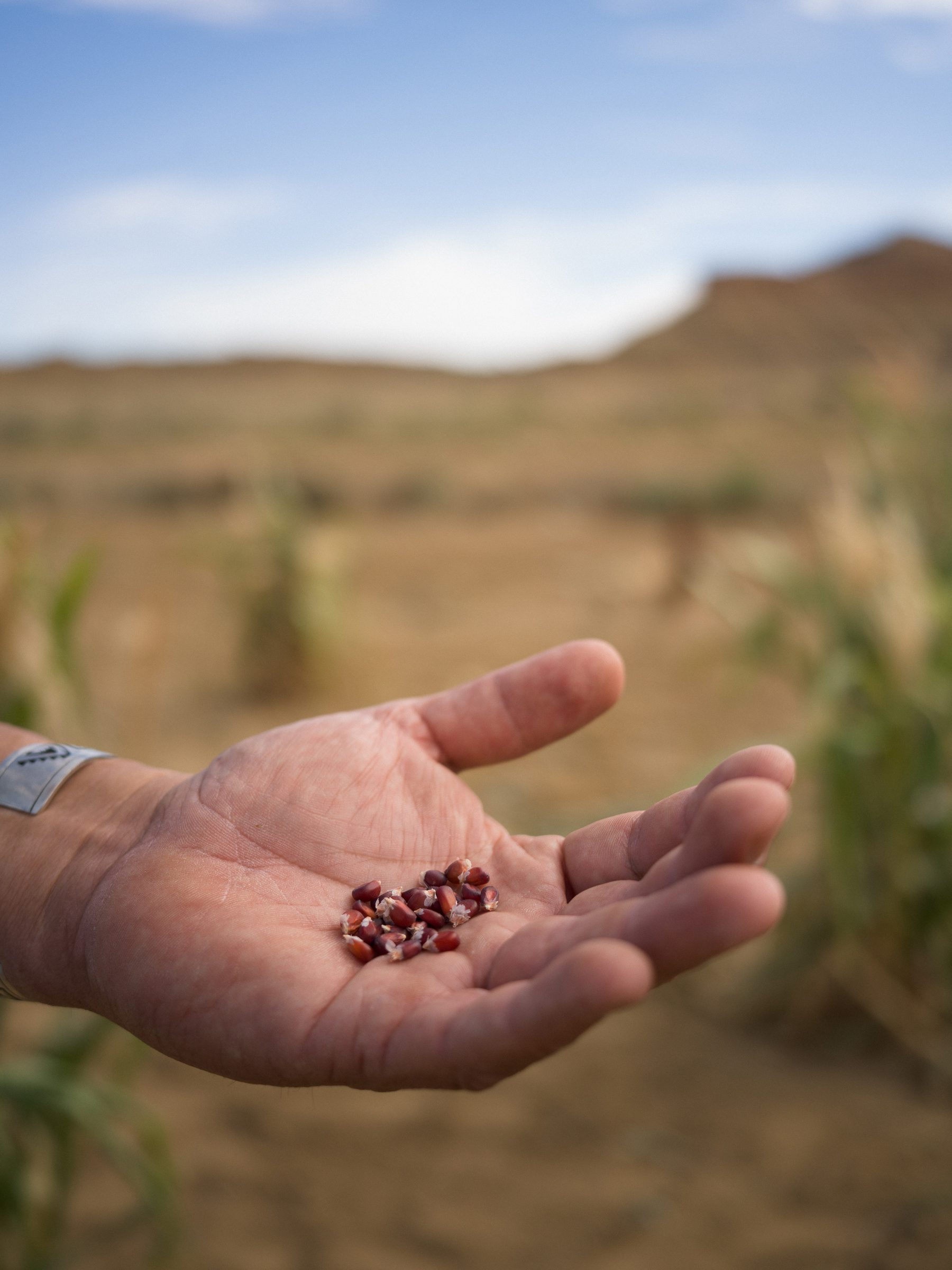
Amaya: Michael, how does the Indigenous Resilience Center support work like this?
Kotutwa Johnson: The Indigenous Resilience Center is a key in my mind to bring out more of this community work, so we can increase the capital to help those nonprofit organizations, Indian-led organizations, increase capacity so that they too can become sustainable. They don't have to worry about a one- or two-year grant, and then they can continue to have the capability and the know-how to go out and receive more grants and to do other things.
Amaya: Lilian, what role do you see for future generations moving forward?
Hill: It's really important for the next generation of young people to know that it is also their time to shine and to be in the light, and that myself and the generations who have come before them are always going to be here to support them and to uplift them. And so I'm really excited and happy to see what their vision looks like and to support them so that we can have a thriving community beyond the confines of colonization and capitalism, which we face now. So really, my prayer is to move beyond extraction into a more generative and thriving Indigenous future.
Learn more about our grantee, the Indigenous Resilience Center.




